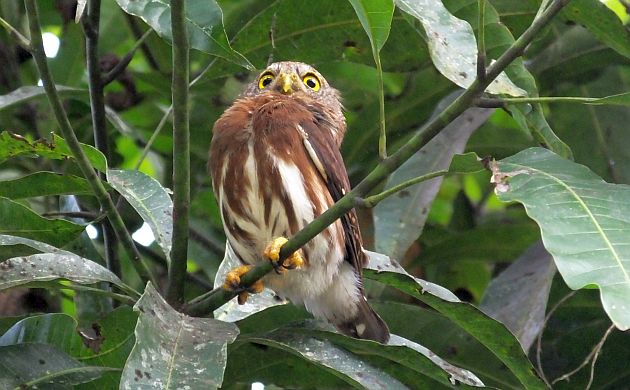
There is a regular birding route in Costa Rica that hits every major habitat in the country and makes an easy, logistical friendly loop. The sites on that loop are visited by most tours and include hot spots like the Dota Valley (think Savegre), the Golfo Dulce lowlands, Carara, and La Selva among other places commonly featured on trip reports. Those time honored sites are always good and result in fantastic, birdy trips but they aren’t the only places in Costa Rica for birding.
Since living in this Central American country provides me with more opportunities for exploration than the average visiting birder, I like to check out sites situated off the beaten track. Some don’t work as well as I would like, and others turn out to be birding gold mines, but no matter which species show, it’s always an adventure. Recently, thanks to guiding some world birders with a specific, challenging target list, after a 14 year hiatus, I got the chance to visit Hitoy Cerere, one of the lesser known jackpot sites. As with most places in Costa Rica, thanks to global warming, the forest was not as humid as it should be, and various bird populations are probably declining, but it still seemed better off than other, much drier areas of the country. For example, the leaf litter didn’t look as dry as other places, and I noticed a fair number of frogs, insects, and small lizards in the understory. The presence of those small creatures was notable because they play a prominent role at the base of the rainforest food pyramid. Take them out of the equation and the upper levels of the ecological structure start to collapse (I honestly fear this is happening in many parts of Costa Rica and elsewhere). At Hitoy, though, the birds came through in terms of number and quality.
Located south of Limon and 36 kilometers west of Cahuita, Hitoy Cerere was and still is one of the best lowland forest sites on the Caribbean slope. Although information about the place often refers to it as a foothill site for species like Lattice-tailed Trogon, this is simply misleading. Although higher parts of the reserve are indeed in the foothill zone, most of the park and all accessible areas are less than 400 meters above sea level. In Costa Rica, that translates to lowland rainforest, and that habitat in Costa Rica doesn’t get much better than Hitoy.

Lattice-tailed Trogon- try Quebrada Gonzalez for this one.
Massive, mature trees reach heights that challenge the binos, and old second growth augments the diversity. Even better, the forests at Hitoy are connected to the Amistad International Park, one of the largest forest blocks in Central America. Although raptors seem scarce at Hitoy, I wouldn’t be surprised if Harpy Eagle lurks in the reserve, especially the remote interior sectors where no one treads. Although we couldn’t reach that exciting inner core of the forest, we were very pleased with the birding on the short trails as well as on the road there. Our first stop was on that road at a spot with a vista of a forested hillside. Although we hoped for but did not find Snowy Cotinga, we saw and heard 60 other expected lowland species in less than an hour.
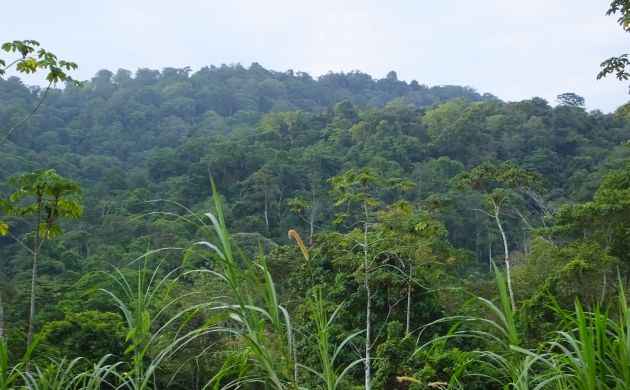
The view of the forested hillside.
In the reserve itself, the birds came fast and furious ten minutes into the walk. First, a small flock of antwrens called from the understory and got us peering into the viny tangles for looks at Checker-throated and White-flanked Antwrens. Then, the birding excitement got notched up a gear when a Great Jacamar called right next to us and proceeded to fly in and perch directly over the trail!
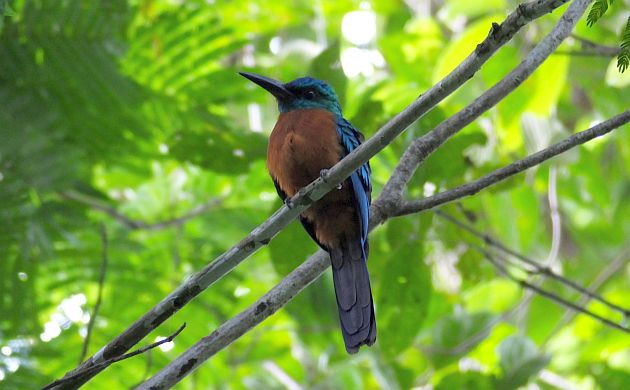
Although this species is widespread in Amazonia, it is very rare in Costa Rica and a sign of quality rainforest.
As Purple-throated Fruitcrows and oropendolas foraged high overhead, a Scaly-breasted Wren sang from the understory and showed its shy self. When an even rarer, mega Violaceous Quail-Dove sang, we had to leave the jacamar to its own, big-beaked devices.
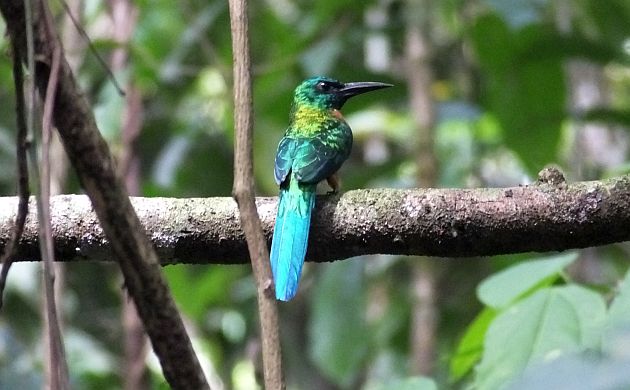
Check out the beak…
Unfortunately, the quail-dove was too far in the forest to see and never came out for a look. BUT, that frustration was just as quickly replaced by another dose of excitement when a Black-crowned Antpitta called from just up the trail! This fancy antpitta is, alas, rare and more difficult to find in Costa Rica than ever. Hitoy is one of the only remaining reliable spots and we had fine looks at a male.
With some good target species in the bag, we checked a small loop trail, saw a few species at an antswarm, and did the siesta thing in some shade at the reserve entrance. After that much needed rest, it was back to birding and the first thing we got on was some major raptor migration in the form of Swainson’s Hawks, TVs, and a few Broad-winged’s for good measure. As a couple of huge kettles flew over, we enjoyed the magic of hawk migration before moving forward and immediately getting on a male Snowy Cotinga that flew over us and perched at twelve o’clock.
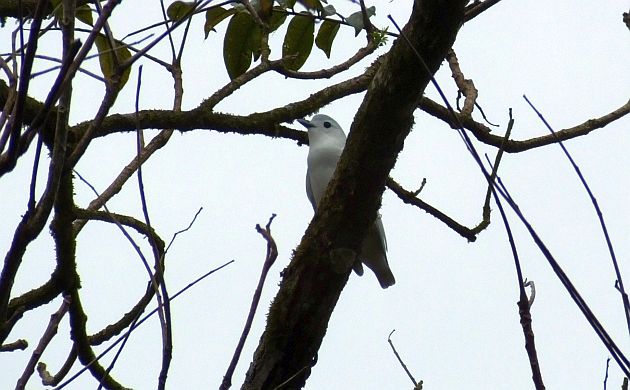
Ron said that the simple contrast of pure white and beady black eye reminded him of a Snow Petrel he saw in the waters of Antarctica.
After the cotinga, we eased on down the road looking for Sulphur-rumped Tanager, Central American Pygmy-Owl, Semiplumbeous Hawk, and, of course, whatever else might come our way. A spot with scattered tall trees quickly turned up the owl and it put on a show right in front of us. Although the target tanager didn’t come in to freak out about the owl, we did find one a bit further up the road. Although it was too high for a photo, that friendly, usually flighty bird species did stay long enough for scope views!
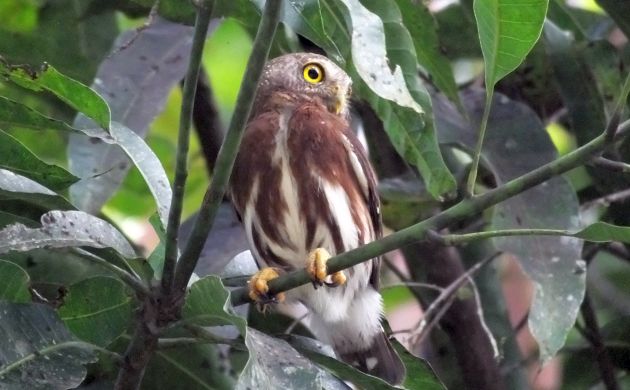
The pygmy-owl was not exactly shy.
After that last tough target, we headed back to the hotel near Cahuita to celebrate an excellent day of 134 species (no waterbirds in that list), several of which were tough forest birds. I wonder what else can be found in that wonderful, birdy, off the beaten track place?













Looks like a great spot that you need to get back to! Beautiful photos too! 🙂